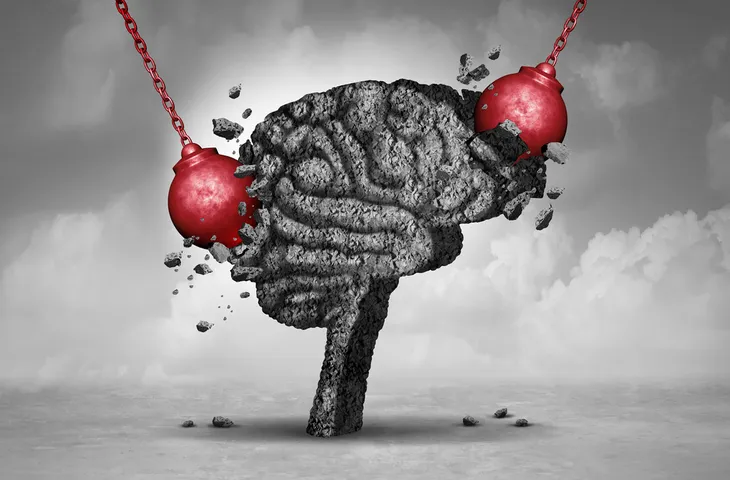There’s getting a headache, and then there’s getting a migraine headache. While the former is irritating and painful, the other is often completely debilitating, making it virtually impossible to carry out daily activities like going to work, feeding the kids, even watching a little television.
But not all migraine headaches are the same. In fact, there are a number of different types of migraine headaches, with each having specific symptoms and, in many cases, treatments. The first step towards managing or even overcoming these health challenges involves being able to identify the type or types of migraine headaches that affect you. With that information, you can work with your family doctor to find a treatment strategy for your migraine problem.
Aura Migraines
One of the first questions anyone suffering from migraine headaches should answer is “does an aura seem to appear when the migraine emerges?” This aura can appear in different ways — it may look like lines, shapes or even flashes of light. The commonality here is that all of them will accompany the pain of a migraine and they can affect an individual’s field of vision for an extended period of time.
These visions may also be accompanied by unique sensations affecting the body, such as the feeling of tingling or numbness in the arms and legs. Even the most basic senses — like smell, speech, taste, and touch — can be affected during an aura migraine headache. In any case, it’s estimated that about one in four people with migraines will experience the aura effect.
Brainstem Aura
Aura migraines represent a sub-type of migraine headaches. But within the aura sub-type is the brainstem aura, which results in several very unique symptoms, including difficulty speaking (with speech being slurred in some cases), vertigo (or the feeling that one’s balance is being lost), tinnitus (or irritating ringing in the ears), and double vision.
Some people who suffer from brainstem aura migraine headaches will also experience a general unsteadiness that makes it difficult to run, walk or drive a vehicle. The brainstem aura headache can also leave individuals feeling particularly sensitive to sound — a big problem for anyone with a house full of kids.
Vestibular Migraines
The most basic type of migraine headache will feature intense pain that lingers for hours at a time, leaving an individual struggling to carry out basic daily activities. Meanwhile, those individuals who suffer from aura-based or ocular migraines may see flashing lights and other visual disturbances that can impair one’s vision on top of providing pain and discomfort.
But these symptoms are relatively minor compared to the difficulty facing patients with vestibular migraine headaches. In these cases many other symptoms are present, but they’re also joined by the emergence of vertigo or the feeling that one is spinning and bound to lose all balance. This feeling can make it next to impossible for one to do anything but lay in bed or on the couch, with the sensation lasting anywhere from ten minutes to several hours.
It’s important to note, that a “vestibular migraine can cause vestibular or balance symptoms with or without an actual headache,” says John Hopkins Medicine.
Hemiplegic Migraines
For many people, a migraine headache can include weird sensations — like a flashing aura, sensitivity to light and general, serious discomfort — that last for much of a day or evening. But a special sub-class of migraine headache patients will experience hemiplegic migraine headaches, which involve paralysis of large parts of the body.
In most cases, hemiplegic migraine headache patients will feel some paralysis — or loss of feeling — on one side of the body. This general uneasiness affecting one side of the body can last for an extended period of time, such as a few days. Within the hemiplegic migraine sub-type there are two niches, including familial and sporadic. As the name suggests, familial hemiplegic migraines tend to be genetic and may affect multiple family members, while sporadic hemiplegic migraines do not.
Menstrual Migraines
Roughly half the population knows that each month will bring discomfort in the form of the menstrual cycle. For many women, menstruation is difficult, even uncomfortable, but not accompanied by any significant pain or serious health challenges. But for many other women, that “time of the month” is a period of excruciating pain in the form of migraine headaches.
Menstrual migraines tend to occur over a period starting just before the period begins and about three to four days after its starts — overall, that’s about a one-week period of time (though the migraine headaches themselves are unlikely to last quite that long). Typically, the menstrual migraine headache is not accompanied by an aura — or visual sensations like flashing lights — but there are exceptions to this rule.
Ocular/Retinal Migraines
One of the rarer sub-types of migraine headache is the ocular (or retinal) migraine headache. In some ways the ocular migraine is very similar to the aura-based migraine headache: both involve visual disturbances, like the appearance of flashing lights.
However, the ocular migraine headache is unique in that it can actually involve the appearance of colorful lights. It’s also unique in that the visual disturbances may affect one eye more than the other, and may even make one feel partially blind for a short period of time. Generally, this vision impairment lasts only an hour or two, but in some cases it can last much longer.
Chronic Migraines
Many individuals who suffer from migraine headaches experience these types of headaches only occasionally — such as once or twice a month. And while this can present significant obstacles for the patient, it’s not quite as difficult to manage as the situation facing individuals with chronic migraines.
By definition, an individual who experiences a headache of any kind over the course of 15 or more days a month for three or more months in a row is a chronic migraine sufferer. In other words, someone who has headaches for more than half the days in a month would be considered a chronic migraine patient. This definition also applies if an individual has migraine symptoms on 8 days each month.










